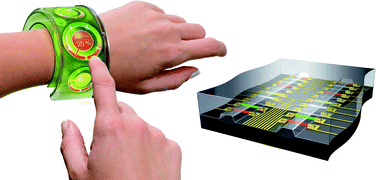The general mechanism of chemical sensing is based on molecular recognition linked to different transduction strategies based on electrochemical, optical, gravimetric or thermal effects that can convert the signal to digital information. Electrochemical sensors support accurate, fast, and inexpensive analytical methods with the advantages of being easily embedded and integrated into electronics, and having the greatest potential impact in the areas of healthcare, environmental monitoring (e.g. electronic noses), food packaging and many other applications (E. Bakker and Y. Qin, Anal. Chem., 2006, 78, 3965).1 Nanoscale electrochemical biosensors offer a new scope and opportunity in analytical chemistry. The reduction in the size of electrochemical biosensors to nanoscale dimensions expands their analytical capability, allowing the exploration of nanoscopic domains, measurements of local concentration profiles, detection in microfluidic systems and in vivo monitoring of neurochemical events by detection of stimulated dopamine release (R. Kennedy, L. Huang, M. Atkinson and P. Dush, Anal. Chem., 1993, 65, 1882).2 This article reviews both state of art developments in electrochemical nanosensing, and the industrial outlook.


 Please wait while we load your content...
Please wait while we load your content...